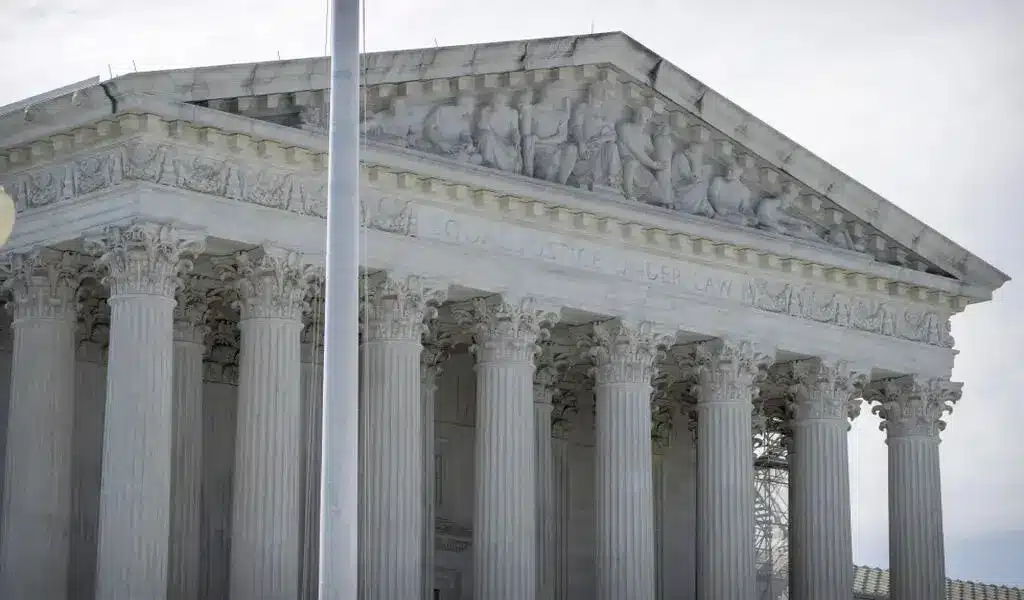News
China Dams Continue to Hinder Water Flow on the Mekong River

China’s water relations with Thailand and the other lower Mekong countries are once again under strain after Beijing held up the Mekong River’s flow at one of its large dams upstream, precipitating a sudden drop in volume for downstream countries that share the region’s longest body of water.
“The water levels dropped suddenly since the beginning of January,” fumed Niwat Roikaew, chairperson of Love Chiang Khong Group, a nonprofit environmental campaign in Chiang Rai, a northern Thai province where the Mekong flows past. “We all know this happened because China closed the dam.”
An estimated 60 million people along the lower Mekong depend on the river’s flow for their livelihood. Communities in Thailand, Cambodia, Laos and Vietnam were caught off guard by Beijing’s move, worsening their plight in the midst of the annual dry season.
By mid-February there was little relief in river basin communities affected by China’s decision to reduce the discharge from Jinghong Dam in Yunnan Province. China’s Ministry of Water Resources informed the lower Mekong countries of its tests at the mega-dam in early January, almost a week after it began to slash the flow to 1,000 cu. meters per second from the usual 1,900 cu. meters. The tests were to have been completed by Jan. 24.
The fluctuating river flow has fallen to “worrying levels,” the Mekong River Commission said in a report this month. The intergovernmental body — representing Cambodia, Laos, Thailand and Vietnam — manages the Mekong basin’s ecology.
“There have been sudden rises and falls in water levels immediately downstream of Jinghong and further down to Vientiane [the Laotian capital], which has been challenging for authorities and communities to prepare for and respond to possible impacts,” an MRC official said in the report.
Lack of cooperation from China
The MRC’s warning highlights a diplomatic shortcoming that continues to dog China and its southern riparian countries: a lack of cooperation over a shared natural resource.
“There is still a need to deepen cooperation on transboundary water governance,” said Carl Middleton, director of the Center for Social Development Studies at Chulalongkorn University in Bangkok. “The appropriate goal is [for the] accountable operation of hydropower projects that avoid social and environmental impacts to the extent possible, while acknowledging and compensating for harms created.”
China, which refers to the Mekong as the Lancang River, has been in the crosshairs of local and international environmentalists for the power it wields to reduce the water flow. Critics say Beijing uses the river as a tap to be turned on or off to meet domestic water requirements.
“As an upstream country, it looks at the river as a canal, or as H2O (water), and has the power to determine the river’s use,” said Pianporn Deetes, Thailand campaign director for International Rivers, a global environmental defense group. “But it is not about China alone, because there is a need for governance of the river that recognizes its ecological value and its multiple uses for millions of local communities.”
The tension between Beijing and the Mekong basin communities, sparked by China’s construction of 11 large dams in its upstream stretch of the river, has tested the ties the Asian powerhouse has sought to build with neighbors in mainland Southeast Asia. Vietnam, when it chaired the 10-member Association of Southeast Asian Nations last year, elevated the concerns about the Mekong for the entire bloc to consider.
Rice bowl of the region
The Mekong begins its 4,600 km journey from China’s Tibetan Plateau and snakes south through Yunnan Province, flowing past Myanmar into the Mekong basin through Vietnam’s Mekong Delta until it empties into the South China Sea. The basin is the rice bowl of the region.
A severe drought in 2019 laid bare the impact that dams in China and in other Mekong countries like Laos have on the river communities. Affected were the rice fields in Vietnam’s Mekong Delta as well as Cambodia’s Tonle Sap, a giant lake that needs the Mekong’s waters for its abundant supply of fish — a staple in the local diet.
“The Vietnamese and the [Cambodians] in the lower Mekong have evolved agricultural systems [and systems for riverine fisheries] that are closely attuned to the river’s rise and fall,” David Brown, a former Vietnamese-based U.S. diplomat, told Nikkei Asia. “Now, the productivity of both agriculture and fisheries is impacted by climate change, China’s Lancang dams and the damming of Mekong tributaries in Laos and, to a lesser extent, in Vietnam’s central highlands.”
China’s plans to share data
China’s efforts to mitigate the damage have been measured by its willingness to share river flow data with the lower Mekong countries. Until last year, China shared its water flow information only during the annual wet season from June through October, when the river and its tributaries swell and contribute to the annual floods that farmers depend on.
Following the 2019 drought, China relented to calls from southern neighbors for water flow data covering the dry season. Premier Li Keqiang in August revealed China’s plans to share data during the dry season at a summit of the riverine countries that are members of the Lancang-Mekong Cooperation initiative, a Beijing-created body that includes the MRC members, Myanmar and China.
But local community leaders like Niwat, in Thailand, remain unimpressed.
“We as a Mekong community need to discuss and come up with an agreement of how much water must be released [from Chinese dams] each time to keep the natural cycle for many lives along the river,” he said. “China cannot make this decision alone.”
Source: Nikkei

News
Google’s Search Dominance Is Unwinding, But Still Accounting 48% Search Revenue

Google is so closely associated with its key product that its name is a verb that signifies “search.” However, Google’s dominance in that sector is dwindling.
According to eMarketer, Google will lose control of the US search industry for the first time in decades next year.
Google will remain the dominant search player, accounting for 48% of American search advertising revenue. And, remarkably, Google is still increasing its sales in the field, despite being the dominating player in search since the early days of the George W. Bush administration. However, Amazon is growing at a quicker rate.
Google’s Search Dominance Is Unwinding
Amazon will hold over a quarter of US search ad dollars next year, rising to 27% by 2026, while Google will fall even more, according to eMarketer.
The Wall Street Journal was first to report on the forecast.
Lest you think you’ll have to switch to Bing or Yahoo, this isn’t the end of Google or anything really near.
Google is the fourth-most valued public firm in the world. Its market worth is $2.1 trillion, trailing just Apple, Microsoft, and the AI chip darling Nvidia. It also maintains its dominance in other industries, such as display advertisements, where it dominates alongside Facebook’s parent firm Meta, and video ads on YouTube.
To put those “other” firms in context, each is worth more than Delta Air Lines’ total market value. So, yeah, Google is not going anywhere.
Nonetheless, Google faces numerous dangers to its operations, particularly from antitrust regulators.
On Monday, a federal judge in San Francisco ruled that Google must open up its Google Play Store to competitors, dealing a significant blow to the firm in its long-running battle with Fortnite creator Epic Games. Google announced that it would appeal the verdict.
In August, a federal judge ruled that Google has an illegal monopoly on search. That verdict could lead to the dissolution of the company’s search operation. Another antitrust lawsuit filed last month accuses Google of abusing its dominance in the online advertising business.
Meanwhile, European regulators have compelled Google to follow tough new standards, which have resulted in multiple $1 billion-plus fines.

Pixa Bay
Google’s Search Dominance Is Unwinding
On top of that, the marketplace is becoming more difficult on its own.
TikTok, the fastest-growing social network, is expanding into the search market. And Amazon has accomplished something few other digital titans have done to date: it has established a habit.
When you want to buy anything, you usually go to Amazon, not Google. Amazon then buys adverts to push companies’ products to the top of your search results, increasing sales and earning Amazon a greater portion of the revenue. According to eMarketer, it is expected to generate $27.8 billion in search revenue in the United States next year, trailing only Google’s $62.9 billion total.
And then there’s AI, the technology that (supposedly) will change everything.
Why search in stilted language for “kendall jenner why bad bunny breakup” or “police moving violation driver rights no stop sign” when you can just ask OpenAI’s ChatGPT, “What’s going on with Kendall Jenner and Bad Bunny?” in “I need help fighting a moving violation involving a stop sign that wasn’t visible.” Google is working on exactly this technology with its Gemini product, but its success is far from guaranteed, especially with Apple collaborating with OpenAI and other businesses rapidly joining the market.
A Google spokeswoman referred to a blog post from last week in which the company unveiled ads in its AI overviews (the AI-generated text that appears at the top of search results). It’s Google’s way of expressing its ability to profit on a changing marketplace while retaining its business, even as its consumers steadily transition to ask-and-answer AI and away from search.

Google has long used a single catchphrase to defend itself against opponents who claim it is a monopoly abusing its power: competition is only a click away. Until recently, that seemed comically obtuse. Really? We are going to switch to Bing? Or Duck Duck Go? Give me a break.
But today, it feels more like reality.
Google is in no danger of disappearing. However, every highly dominating company faces some type of reckoning over time. GE, a Dow mainstay for more than a century, was broken up last year and is now a shell of its previous dominance. Sears declared bankruptcy in 2022 and is virtually out of business. US Steel, long the foundation of American manufacturing, is attempting to sell itself to a Japanese corporation.
SOURCE | CNN
News
2024 | Supreme Court Won’t Hear Appeal From Elon Musk’s X Platform Over Warrant In Trump Case

Washington — Trump Media, The Supreme Court announced Monday that it will not hear an appeal from social media platform X about a search warrant acquired by prosecutors in the election meddling case against former President Donald Trump.
The justices did not explain their rationale, and there were no recorded dissents.
The firm, which was known as Twitter before being purchased by billionaire Elon Musk, claims a nondisclosure order that prevented it from informing Trump about the warrant obtained by special counsel Jack Smith’s team violated its First Amendment rights.
The business also claims Trump should have had an opportunity to exercise executive privilege. If not reined in, the government may employ similar tactics to intercept additional privileged communications, their lawyers contended.
Supreme Court Won’t Hear Appeal From Elon Musk’s X Platform Over Warrant In Trump Case
Two neutral electronic privacy groups also joined in, urging the high court to hear the case on First Amendment grounds.
Prosecutors, however, claim that the corporation never shown that Trump utilized the account for official purposes, therefore executive privilege is not a problem. A lower court also determined that informing Trump could have compromised the current probe.

Trump utilized his Twitter account in the weeks preceding up to his supporters’ attack on the Capitol on January 6, 2021, to spread false assertions about the election, which prosecutors claim were intended to create doubt in the democratic process.
The indictment describes how Trump used his Twitter account to encourage his followers to travel to Washington on Jan. 6, pressuring Vice President Mike Pence to reject the certification, and falsely claiming that the Capitol crowd, which battered police officers and destroyed glass, was peaceful.
Supreme Court Won’t Hear Appeal From Elon Musk’s X Platform Over Warrant In Trump Case
That case is now moving forward following the Supreme Court’s verdict in July, which granted Trump full immunity from criminal prosecution as a former president.
The warrant arrived at Twitter amid quick changes implemented by Musk, who bought the company in 2022 and has since cut off most of its workforce, including those dedicated to combating disinformation and hate speech.
SOURCE | AP
News
The Supreme Court Turns Down Biden’s Government Appeal in a Texas Emergency Abortion Matter.

(VOR News) – A ruling that prohibits emergency abortions that contravene the Supreme Court law in the state of Texas, which has one of the most stringent abortion restrictions in the country, has been upheld by the Supreme Court of the United States. The United States Supreme Court upheld this decision.
The justices did not provide any specifics regarding the underlying reasons for their decision to uphold an order from a lower court that declared hospitals cannot be legally obligated to administer abortions if doing so would violate the law in the state of Texas.
Institutions are not required to perform abortions, as stipulated in the decree. The common populace did not investigate any opposing viewpoints. The decision was made just weeks before a presidential election that brought abortion to the forefront of the political agenda.
This decision follows the 2022 Supreme Court ruling that ended abortion nationwide.
In response to a request from the administration of Vice President Joe Biden to overturn the lower court’s decision, the justices expressed their disapproval.
The government contends that hospitals are obligated to perform abortions in compliance with federal legislation when the health or life of an expectant patient is in an exceedingly precarious condition.
This is the case in regions where the procedure is prohibited. The difficulty hospitals in Texas and other states are experiencing in determining whether or not routine care could be in violation of stringent state laws that prohibit abortion has resulted in an increase in the number of complaints concerning pregnant women who are experiencing medical distress being turned away from emergency rooms.
The administration cited the Supreme Court’s ruling in a case that bore a striking resemblance to the one that was presented to it in Idaho at the beginning of the year. The justices took a limited decision in that case to allow the continuation of emergency abortions without interruption while a lawsuit was still being heard.
In contrast, Texas has been a vocal proponent of the injunction’s continued enforcement. Texas has argued that its circumstances are distinct from those of Idaho, as the state does have an exemption for situations that pose a significant hazard to the health of an expectant patient.
According to the state, the discrepancy is the result of this exemption. The state of Idaho had a provision that safeguarded a woman’s life when the issue was first broached; however, it did not include protection for her health.
Certified medical practitioners are not obligated to wait until a woman’s life is in imminent peril before they are legally permitted to perform an abortion, as determined by the state supreme court.
The state of Texas highlighted this to the Supreme Court.
Nevertheless, medical professionals have criticized the Texas statute as being perilously ambiguous, and a medical board has declined to provide a list of all the disorders that are eligible for an exception. Furthermore, the statute has been criticized for its hazardous ambiguity.
For an extended period, termination of pregnancies has been a standard procedure in medical treatment for individuals who have been experiencing significant issues. It is implemented in this manner to prevent catastrophic outcomes, such as sepsis, organ failure, and other severe scenarios.
Nevertheless, medical professionals and hospitals in Texas and other states with strict abortion laws have noted that it is uncertain whether or not these terminations could be in violation of abortion prohibitions that include the possibility of a prison sentence. This is the case in regions where abortion prohibitions are exceedingly restrictive.
Following the Supreme Court’s decision to overturn Roe v. Wade, which resulted in restrictions on the rights of women to have abortions in several Republican-ruled states, the Texas case was revisited in 2022.
As per the orders that were disclosed by the administration of Vice President Joe Biden, hospitals are still required to provide abortions in cases that are classified as dire emergency.
As stipulated in a piece of health care legislation, the majority of hospitals are obligated to provide medical assistance to patients who are experiencing medical distress. This is in accordance with the law.
The state of Texas maintained that hospitals should not be obligated to provide abortions throughout the litigation, as doing so would violate the state’s constitutional prohibition on abortions. In its January judgment, the 5th United States Circuit Court of Appeals concurred with the state and acknowledged that the administration had exceeded its authority.
SOURCE: AP
SEE ALSO:
Could Last-Minute Surprises Derail Kamala Harris’ Campaign? “Nostradamus” Explains the US Poll.
-

 News4 years ago
News4 years agoLet’s Know About Ultra High Net Worth Individual
-
Entertainment2 years ago
Mabelle Prior: The Voice of Hope, Resilience, and Diversity Inspiring Generations
-
News11 years ago
Enviromental Groups Tell Mekong Leaders Lao Dam Evaluation Process Flawed
-

 Health4 years ago
Health4 years agoHow Much Ivermectin Should You Take?
-

 Tech3 years ago
Tech3 years agoTop Forex Brokers of 2023: Reviews and Analysis for Successful Trading
-

 Lifestyles3 years ago
Lifestyles3 years agoAries Soulmate Signs
-

 Entertainment3 years ago
Entertainment3 years agoWhat Should I Do If Disney Plus Keeps Logging Me Out of TV?
-

 Health3 years ago
Health3 years agoCan I Buy Ivermectin Without A Prescription in the USA?


